Modi blames the Congress party—not his ill-planned lockdown—for India’s migrant exodus
The Indian prime minister thinks it was politics that led to the migrant worker exodus in 2020 during the pandemic.
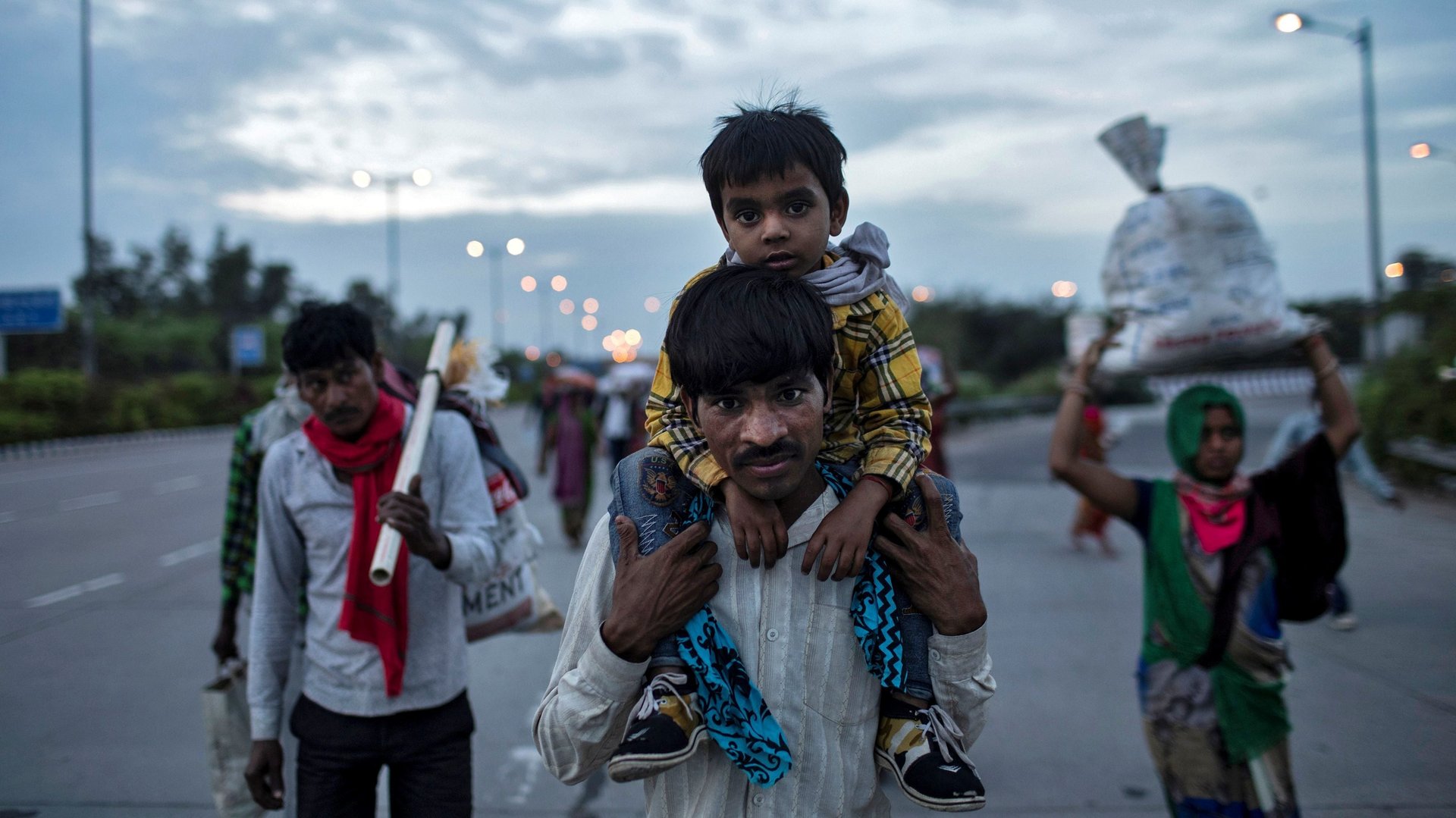

The Indian prime minister thinks it was politics that led to the migrant worker exodus in 2020 during the pandemic.
In an address to parliament yesterday (Feb. 7), Narendra Modi blamed the Congress party for driving masses of labourers from cities during the first wave of covid-19 in March 2020. He alleged that the opposition parties had sparked the countrywide exodus at a time when the World Health Organization recommended that people should remain where they are.
“You pushed labourers into crisis. In Delhi, the government went around slums in jeeps and announced on mics that whoever wants to go home, buses have been arranged. Infections then shot up in Uttar Pradesh and Punjab, where the coronavirus had not even spread that much,” he said. “What kind of politics is this? How long will such politics continue? The entire country is shocked by the behaviour of the Congress.”
However, the healthcare—and humanitarian—crisis of 2020 was starkly different from what Modi claimed.
India’s harsh covid-19 lockdown
On March 24, 2020, Modi declared a nationwide lockdown in a televised address—one of the world’s harshest—with a mere four hours notice. All movement was restricted, with train, road, and air travel completely suspended. Only essential goods and services were spared.
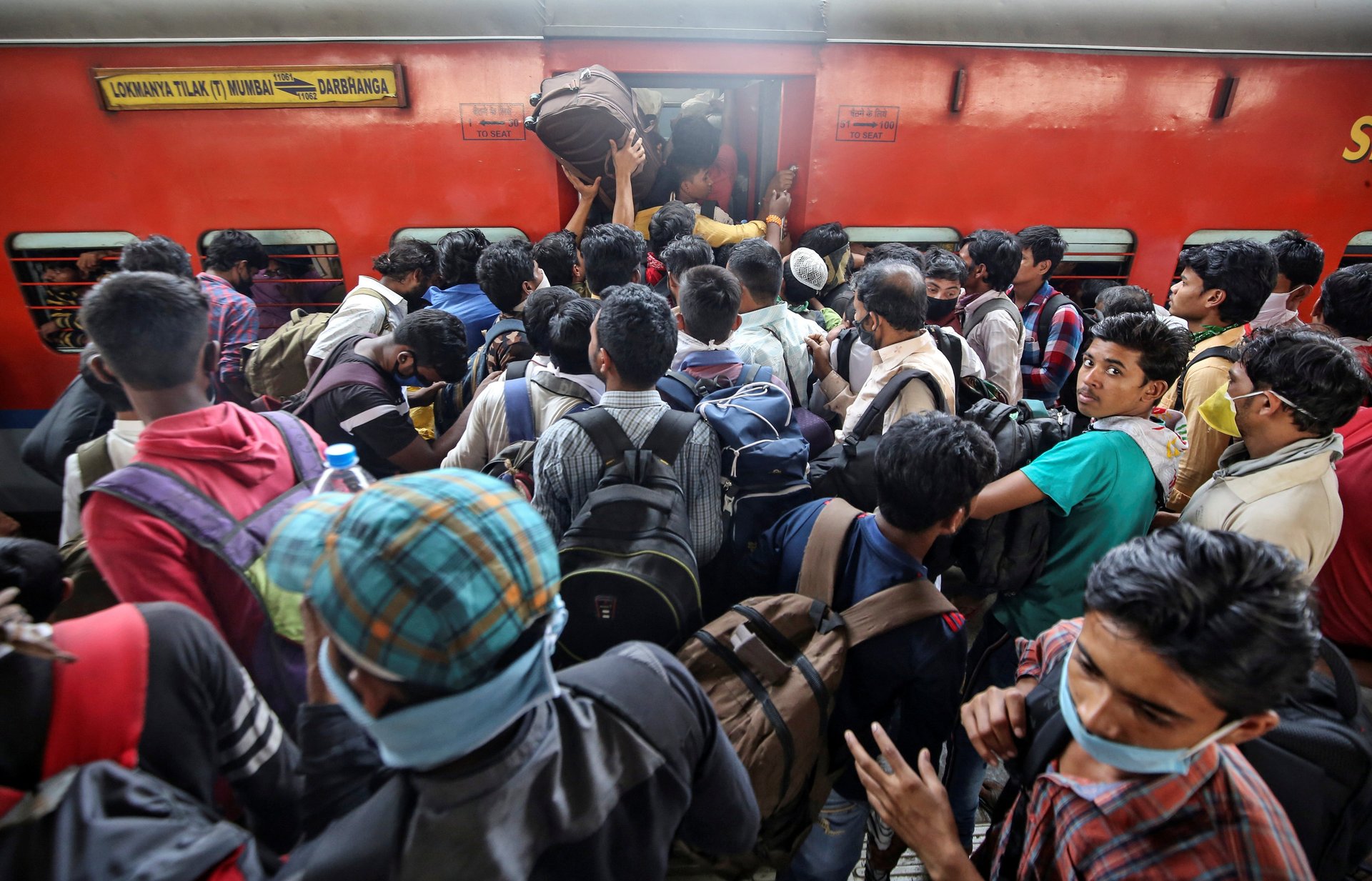
Migrant workers from India’s hinterland, who mostly worked on daily wages in urban India, then began leaving these centres en masse. Overnight, there had lost jobs and couldn’t afford rent, food, and travel.
Millions walked thousands of kilometres or bicycled their way back to villages. There was panic and desperation, often leading to chaos at bus terminals, where either the local administration or civil society organisations stepped in with some aid.
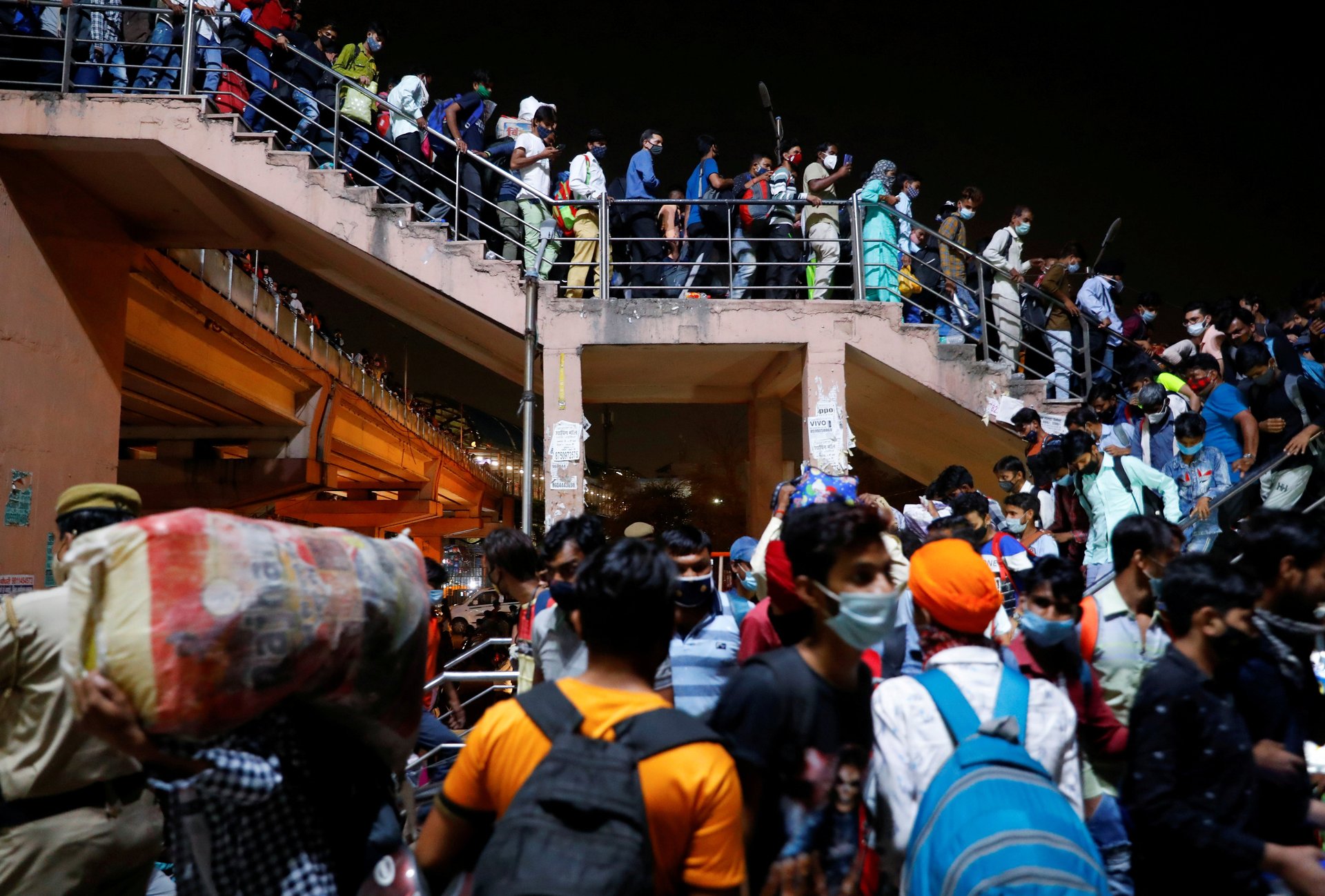
Many labourers died of exhaustion and dehydration during these arduous journeys—a 12-year-old girl walked nearly 150 kilometres from Telangana to her home in Chhattisgarh, only to collapse and die in the last stretch.
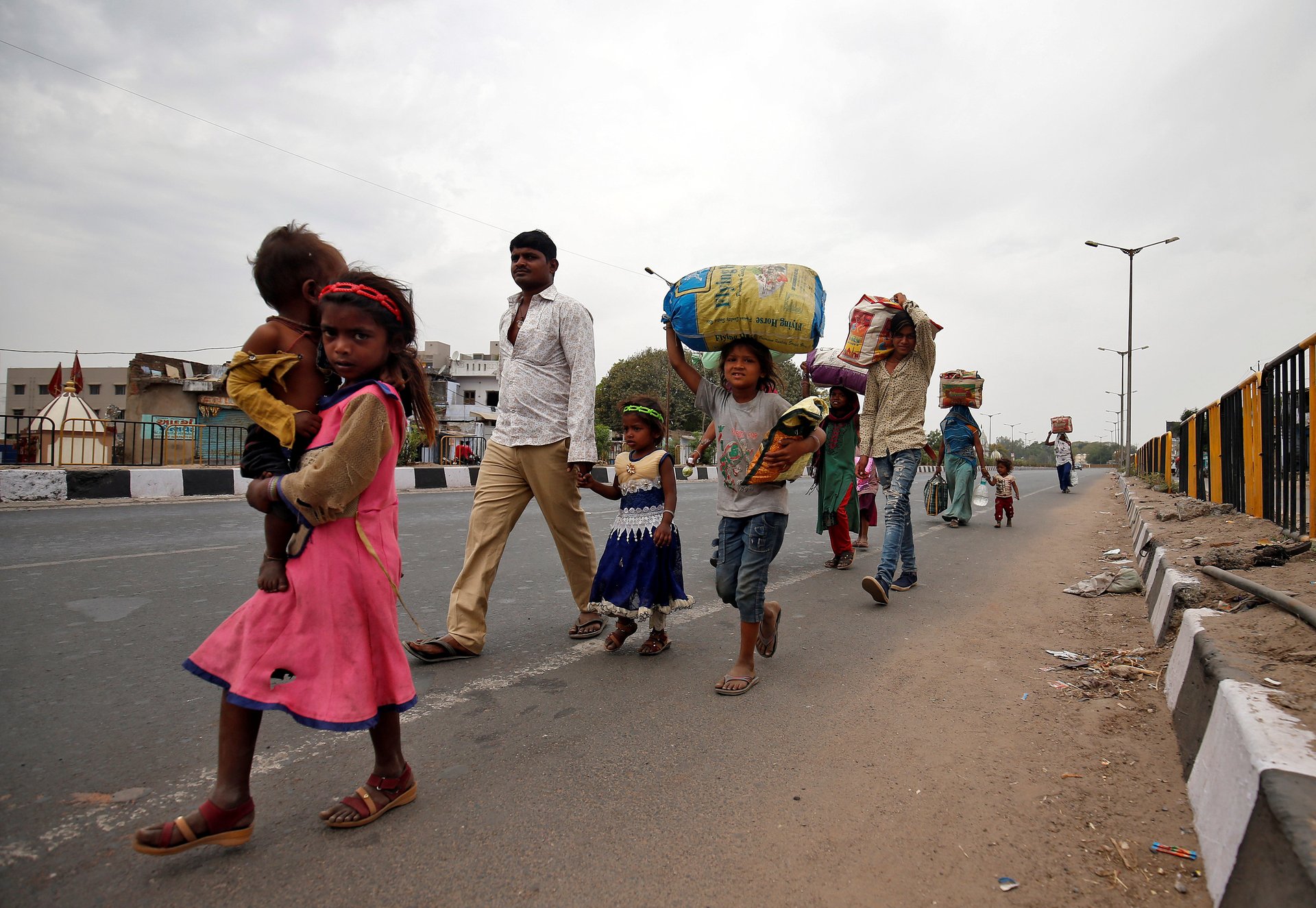
Later, on May 1 (pdf), nearly 35 days after the lockdown, the government announced special trains to ferry migrants. These trains often took circuitous routes, leaving workers on board without food and water for long hours.
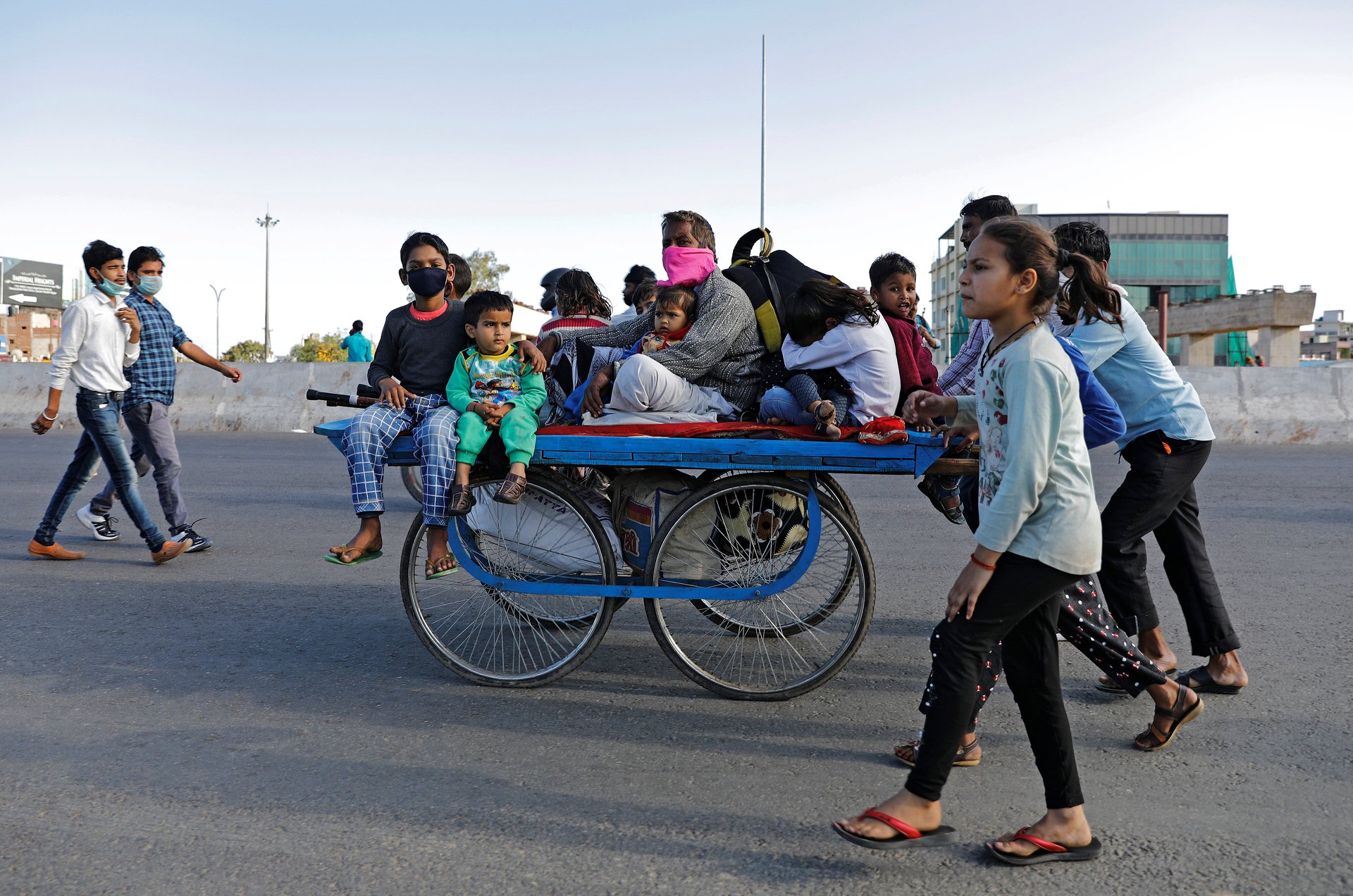
Reports suggested that up to 80 died in the trains during these journeys, though the government maintained that those who died had “earlier illnesses,” denying that dehydration or hunger had turned deadly.
The government also said there was no data on how many migrant labourers had died during the lockdown.
India’s data problem
While the impact of the harsh lockdown on migrant workers was evident in the reports in national newspapers, the government claimed in parliament in September 2020 that it had no data on how many such persons had died in the lockdown.
Since these data were not available, the question of compensating their families was moot.
In response to a question in parliament in September 2020, the government said up to 10 million migrant workers had returned home during the March-June lockdown.